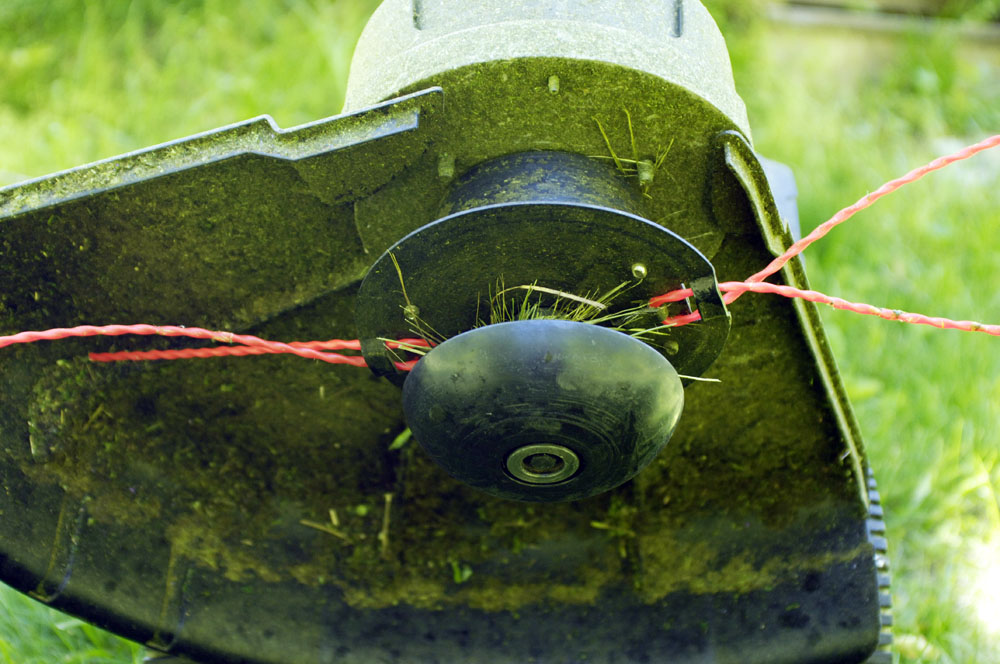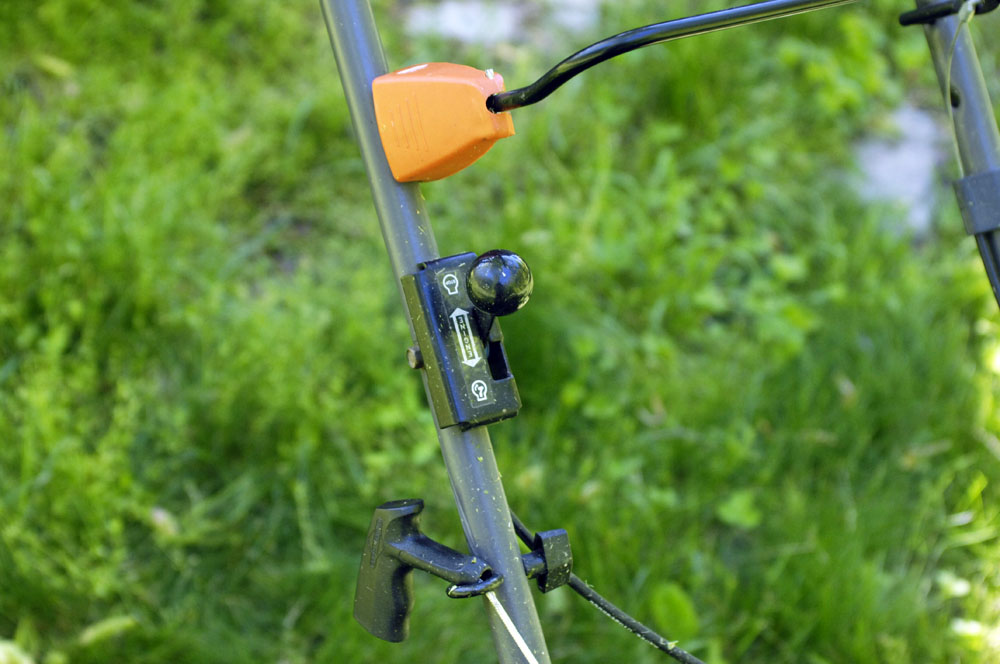What’s the first stop for deer-mothers introducing their fawns to the world? The abbey’s yard, apparently. This one’s legs were still wobbly.
Month: May 2017
Yesterday’s fawns
Anne of Green Gables
For the past five days, after the chickens have gone to bed, and after being whipsawed during the day by the news out of Washington, I have retreated to the television to watch an episode of “Anne With an E,” a new production of Anne of Green Gables produced by Canada’s CBC and available for streaming on Netflix.
There is something very distracting (in a good way) and therapeutic about such a simple story in such a grand setting. The series is, of course, based on the novels of Lucy Maud Montgomery (1874-1942). The first novel of the series was published in 1908. The setting is Prince Edward Island on Canada’s Atlantic coast. I have not read any of the novels and cannot compare the television production to the original story. But the consensus of other reviews seems to be that the CBC production is reasonably faithful to the books, though a touch darker. The story is a classic, of course. Anne of Green Gables has sold 50 million copies and has been translated into 20 languages.
Frankly the Anne character, though she is bright and charming (and splendidly acted) gets on one’s nerves a bit. No doubt her inner life, and the plots she stirs up, will become more interesting as she gets older. But the real star of the show, in my view, is the Marilla character, beautifully portrayed by Geraldine James.
As a period piece, the production is superb. It’s interesting just as a farm story, for anyone who is curious about how family farms used to work. They don’t attempt to show us a complete farm economy, but we do get some good pieces of it — milking cows, hay in the loft, putting up apples, and lots of baking. And what a treat it is when the buggy comes out, pulled by Belle, the sorrel mare. I doubt that many farm horses had a gait as elegant and videogenic as Belle’s, but it’s nice to watch.
I’m watching “Anne With an E” not because it’s the most brilliant story ever written but because of its atmosphere, its innocence, and the fun of being transported back to an idyllic rural culture that we have lost.
The perils of peaches
It’s year eight in the orchard, and this year I just might get my first bite of peach.
Last year, the entire peach crop was wiped out by a late frost. This year, the three peach trees are loaded. One of the trees is weeks ahead of the other two trees and has dozens of already-red peaches. But each morning I notice that someone is knocking them down. It could be a squirrel, or it could be a raccoon that climbs the tree during the night. The animals are very wasteful. They knock down several peaches, take a bite from some of them, and leave the rest lying on the ground for the ants.
I’ve not yet picked any of the peaches off the tree because they’re still hard and need more time to ripen. But I do retrieve the peaches that have been knocked down and take them to the kitchen, hoping that they’ll ripen decently and that they’ll be fit to eat.
If these four peaches ripen properly, there will be peaches and cream.
Sophisticated propaganda vs. the plain old truth
I haven’t posted anything political for a while. Partly this is because the political drama has moved so fast and reversed so often that it has been a tough target. And partly it’s because the media and the American intelligentsia are finally getting things right.
For years, I felt like a voice in the wilderness. As a retired newspaperman, truth to me is sacred, and nothing makes me angrier than lies. And so for years I watched the media fall for the trap that right-wing propagandists had set for them. Journalists, including many of my old colleagues, fell for the notion that “objectivity” and “balance” required them to treat intentional deception as valid and reportable, with lies unchallenged. The clichéd way of saying it is, “Republicans, Democrats differ on whether earth is flat.” This journalistic “principle” held all through the Bush and Obama years. It enabled the sophisticated lies that enabled the Iraq war, and it enabled the right-wing strategy of paralyzing and demonizing President Obama (birtherism, etc.) and Hillary Clinton (Benghazi — boo!). The manipulation of the media (and therefore the manipulation of unsophisticated Americans by sophisticated propaganda) corrupted the 2016 election.
But finally an extremely unsophisticated and extremely stupid man named Donald Trump pushed things too far. Not only did the Washington Post and the New York Times enlarge their staffs (and their circulations), but also the truth suddenly mattered again, and lies could be exposed. It is a pure joy to watch this — our intelligence community supplying the truth, and our newspapers boldly printing the truth and calling lies what they are. This has been the blessing in disguise of the Trump era. The vile Republican Party and its propaganda machine overplayed its hand, and now the tables have turned.
As an amateur scholar of propaganda, another thing that greatly disturbed me over the years was Americans’ dangerous inability to recognize propaganda. Russian interference in the American election, and the injection of “fake news” into social media, is at last teaching most Americans an essential lesson about propaganda. Certainly there are still those who eat their propaganda for breakfast and relish it (they still think that Trump is their savior), but increasingly they don’t count. I am daring to hope that propaganda will never again be able to swing a national election in this country, which means that Republicans will never be able to win again. The simple truth is that Republicans cannot win elections without lying, and that Republicans have to lie about their political objectives to get support for their political products, products such as the Iraq war, or yet more tax cuts for the rich while cutting social services that their own voters depend on.
Yesterday, the Washington Post published a transcript of a secretly recorded conversation in which the Republican congressional leadership talked about Russian interference in American politics. They also talked about Russian propaganda:
Ryan and Rodgers are revealing here not only that they recognize propaganda, but also that they recognize sophisticated propaganda. We learned in the 2016 election that Republicans are entirely willing to go along even with subversive foreign propaganda if it suits their purposes and their power. It won them the 2016 presidential election. Now it has backfired on them. The Republican Party bent over for the Russians, tried to keep it secret, and then lied about it. Now they will pay.
The truth continues to dribble out, and we can’t take our eyes off the web sites of the New York Times and the Washington Post. When events like this are unfolding, I often go to right-wing propaganda sites such as the Drudge Report to see how they’re spinning it. As far as I can tell, at least today, the plain truth is overwhelming any attempts to respond with the usual right-wing spin and lies. For years it was the other way around, with right-wing lies spreading so thick and so fast that no one had the resources — even if they had the will — to shoot down all the lies. Right-wingers — for so long accustomed to overwhelming the rest of us with lies — are at last being overwhelmed by the truth.
Sophisticated propaganda is dangerous stuff. Since the rise of Fox News in 1997, sophisticated right-wing propaganda has dominated and corrupted American politics. Can we now dare to hope that, when Donald Trump goes down, he’ll take the era of right-wing propaganda and the Republican Party down with him?
I am daring to hope it.
UPDATE: This just in: Roger Ailes has died, just as I was finishing this post. What perfect timing. Ailes, as the evil genius behind Fox News, was more than anyone responsible for the propagandization of Americans and for bringing the American democracy to the brink of disaster. Not only did he make propagandization profitable, he also taught millions of Americans to prefer lies to truth. He prepared America for Trump and Putin. An era has truly ended.
The importance of hugging trees
The Hidden Life of Trees: What They Feel, How They Communicate, by Peter Wohlleben. Greystone Books, 2016, 272 pages.
This book got a lot of attention when it was published in German, in 2015, as Das geheime Leben der Bäume. Luckily we had to wait only a year for an English translation.
Though I believe that Wohlleben’s message about trees is well grounded in science and research, much of it also comes from his experience as a forester. It’s sometimes difficult to know just how metaphorical Wohlleben intends to be — for example, when he speaks of trees feeling pain, or of their experience or their character. But he is quite convincing: There is such a thing as tree behavior. If you observe tree behavior, then you must keep in mind that tree behavior is slow and requires years of observation, even if you do something brutal to a tree such as cut off a large limb or tear off some skin. In talking about the character of trees, he points out that individual trees (though the trees may be closely related genetically) may respond very differently to threats such as drought or an infestation of insects or fungus. It is as though individual trees make different judgments about when to start conserving water, or when to drop their leaves.
One of the most fascinating things that Wohlleben tells us about trees is the reach and power of their underground network, which involves not only the trees’ roots but also the mycelia of the many fungi that live underground in cooperation with the trees. This network can transmit messages about the forest environment (though slowly). And trees exchange water and nutrients with each other. Old trees “nurse” their offspring through their roots. Surviving trees sometimes keep the stumps of dead friends alive for many years. Sick trees get help from healthier neighbors. This altruism of trees makes sense, because all trees in a forest work together to preserve the forest environment — a canopy that catches 97 percent of the light, and where underneath the canopy everything is dark, moist, and friendly to fungi.
Wohlleben will leave you quite convinced that trees are sentient and intelligent in many ways, ways that are particular and appropriate to trees and their long lives (if left alone). Wohlleben also helps us understand how cruelly and stupidly we treat our trees and forests and the risks this poses to our ecosystems.
This book now takes its place among the works of other writers and thinkers who are leading us to what I believe is inevitable, assuming that we don’t destroy our planet. That is that all living things have natural rights, and that these rights must be protected by law.
This book is a must read.
Adams Motor Grader
When I see fine old machines, decaying and unlikely to ever run again, I feel something like pity. There’s something about well-made machines down on their luck that deserves our empathy.
But people do restore these things, and that’s part of why I’m posting the photo. This one is for sale, and it’s parked alongside N.C. 67 just east of Boonville, North Carolina. These were a common sight in my Yadkin Valley childhood. I still see them sometimes (newer ones, of course) on unpaved mountain roads.
Eight years down, a hundred years to go
Music, politics, and a smidgen of religion
Frankly, I am terrible at shooting and editing video. But I would like to get better at it. The abbey’s new satellite connection to the Internet is super-fast and, for the first time, makes it possible to work with video.
Here’s a wee practice video.
From the abbey organ, a Rodgers 730, this is a chorale prelude by J.S. Bach, BWV 644, “Ach wie nichtig, ach wie flüchtig.” The German hymn was written by Michael Franck in 1652. The English words are by an American, William Allen, who was born in Pittsfield, Massachusetts, in 1784.
Review: Husqvarna weed-eater on wheels
Eight years ago, after I cleared an acre of elderly pine trees for the abbey and had the stumps removed, it was hard to imagine ever having a weed problem. It was all bare red dirt, scary to look at. I was eager for anything — anything — to grow. Now there are weeds, and lots of them.
Last fall, we bought a Husqvarna chain saw, and Ken was very pleased with it. This spring, an old weed-eater needed replacing. I went to the local hardware store in Walnut Cove with the intention of buying a Husqvarna handheld weed-eater. But outside the front door of the store I saw a Husqvarna HU 675WT weed-eater on wheels, and I was intrigued.
For one, it’s more powerful than a handheld weed-eater, with a four-cycle Briggs & Stratton engine. For two, it uses a much heavier cutting cord. After a demo from Mr. Bill, who owns the store, I bought it. With its handles folded over, it actually fit into the back of the Smart car.
Ken was skeptical. I was afraid I’d make a mistake. Some weeks later, though, he said that it was growing on him.
The weed-eater is almost perfectly balanced, on high wheels. That will easily deceive you into thinking the machine is weightless, which it isn’t. When working on a slope, it feels a bit heavy, but it’s manageable. One of the best things about the weed-eater is the heavy cutting cord, several times the diameter of handheld weed-eaters. Even better, the cord is not on a spool. The cutting cord comes in pre-cut loops. If the cord gets ripped up, it takes about 30 seconds to loop in a new cord. No fussing with a cord spool!
Blackberries are tough. They’re the biggest weed challenge here. This thing will rip down blackberry stalks with ease — though the blackberries retaliate by tearing up the cutting cord if you try to move too fast.
The right side of the machine has a safety guard. On the left side, the cutting cord is exposed. If the cutting cord hits the base of a young tree, it will tear the bark off in no time. So it’s important, when trimming close to your beloved trees and shrubs, to always keep the guard side of the machine turned toward the tree.
The abbey also has a small battery-powered weed-eater for small jobs such as trimming grass. Thus it takes three machines to manage the grass and weeds here — a 28-inch Snapper riding mower, and two sizes of weed-eaters.
If the summer is as rainy as the spring has been, the machines are going to get quite a workout.












